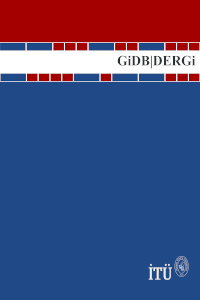PROBABILISTIC DAMAGE STABILITY: Knowledge and Understanding
PROBABILISTIC DAMAGE STABILITY: Knowledge and Understanding
The goal of this manuscript is to provide more knowledge for ship designers with respect to probabilistic damage stability PDS . More precisely, the manuscript aims to give more insight to how certain changes in the arrangement and intact stability affect the PDS or A-index for a specific vessel. The following two objectives can be investigated: First, what is the effect on the A-index of changing the size of the particular tanks located along the ship, by changing the height of the horizontal deck?; secondly, what is the effect on the A-index of changing the intact stability of the ship, i.e. the ship’s initial GM values for the three subdivision draughts dS, dP and dL? The background for the abovementioned goal, is the introduction of the PDS regulations by IMO in 2009. Ship designers are forced to use the probabilistic approach instead of the deterministic approach DDS , for certain vessel types when calculating damage stability. PDS offers more freedom than DDS in the design of the ship’s internal watertight arrangement. However, since PDS calculations usually are conducted at late design stages, it may be challenging to utilise this flexibility due to time pressure. Thus, ship designers often rely on experience, since there is little time for research and optimisation. The author would therefore like to contribute with more knowledge and understanding to damage stability
___
- IMO. (2008c). Resolution MSC.281(85), Explanatory notes to the SOLAS Chapter II-1
- Subdivision and damage stability regulations, Part B: International Maritime Organization. OLUFSEN, O. & HJORT, G. 2013. An introduction to revised chapter II-1 of SOLAS- 74.
- IMO. (2006). SOLAS Chapter II-1 Construction - structure, Subdivision and Stability, Machinery and Electrical Installations, Part B-1 Stability.: International Maritime Organization.
- IMO. (2008a). International Code on Intact Stability (2008 IS Code): International Maritime Organization.
- IMO. (2008b). Resolution MSC.266(84) - Code of safety for special purpose ships, 2008
- International Maritime Organization. PATTERSON, C. & RIDLEY, J. 2014. Ship Stability, Powering and Resistance
- LAURIDSEN, P. H., JENSEN, J. J. & BAATRUP, J. 2001. Ship Design Using Probabilistic
- Damage Stability Rules — A Sensitivity Study. In: ZHOU, Y.-S. W.- C. C.-J. (ed.) Practical Design of Ships and Other Floating Structures. Oxford: Elsevier Science Ltd. PAPANIKOLAOU, A. 2009. Risk-Based Ship Design: Methods, Tools and Applications, Berlin
- Heidelberg, Springer Berlin Heidelberg. PAPANIKOLAOU, A., LEE, B. S., MAINS, C., OLUFSEN, O., VASSALOS, D. & ZARAPHONITIS, G. 2012. GOALDS–Goal Based Ship Stability & Safety Standards.
- Procedia - Social and Behavioral Sciences, 48, 449-463. LÜTZEN, M. 2001. PhD Thesis: Ship Collision Damage. Department of Mechanical Engineering, DTU.
- Hjort, G., & Olufsen, O. (2014). Probabilistic damage stability: DNV GL AS.
- DJUPVIK, O. 2014. Project thesis: Probabilistic Damage Stability. Msc. , Norwegian University of Science and Technology.
- HJORT, G. And OLUFSEN, O. 2014. Probabilistic damage stability: DNV GL AS.
- IMO 2014. SOLAS Chapter II-1, Part B-1 Stability. Internatiional Maritime Organization.
- IMO. (1966). Load Lines, 1966/1988 - International Convention on Load Lines, 1966, as
- Amended by the Protocol of 1988 - Articles of the International Convention on Load Lines, 1966
- Article 2 - Definitions In I. M. Organization (Ed.). SALEN, R. S. 2016. Project thesis: Probabilistic Damage Stability. Msc. , Norwegian University of Science and Technology. Appendix List of Symbols
- Başlangıç: 2015
- Yayıncı: İstanbul Teknik Üniversitesi
Sayıdaki Diğer Makaleler
PROBABILISTIC DAMAGE STABILITY: Knowledge and Understanding
IMO BALAST SUYU SÖZLEŞMESİ’NE GÖRE GEMİLERDE BALAST SUYU YÖNETİMİ VE GÜNCEL DEĞİŞİKLİKLER
OPTIMIZATION OF DAMAGE STABILITY CHARACTERISTICS IN RO-RO PASSENGER SHIP DESIGN
AÇIK DENİZ YAPILARINDA BULUNAN PATLAMA ENGELLEYİCİ SİSTEMLERİN RİSK TABANLI DEĞERLENDİRİLMESİ
